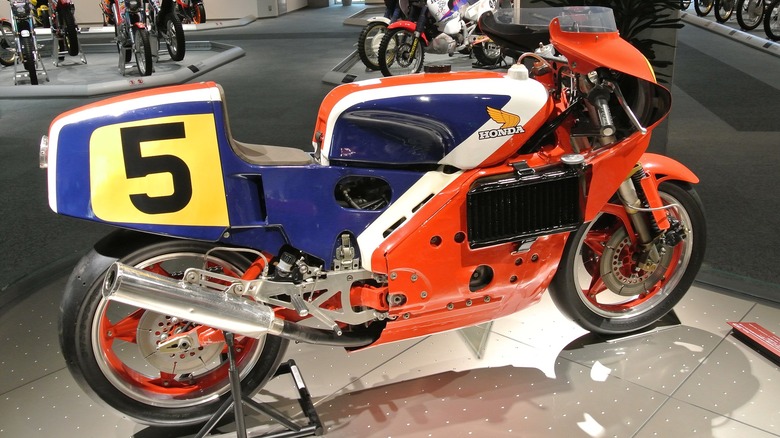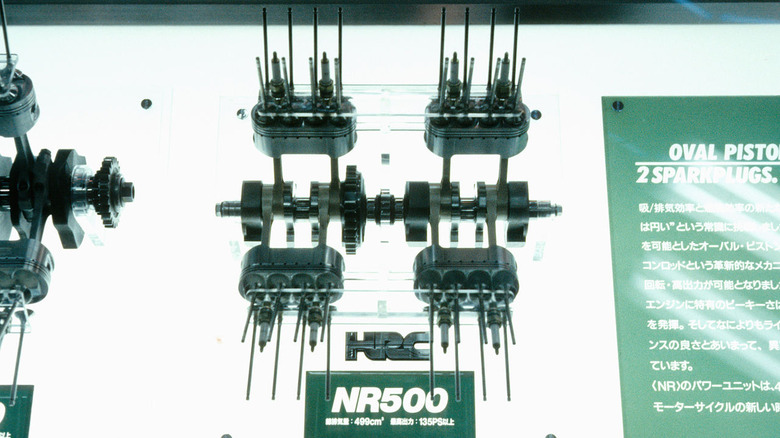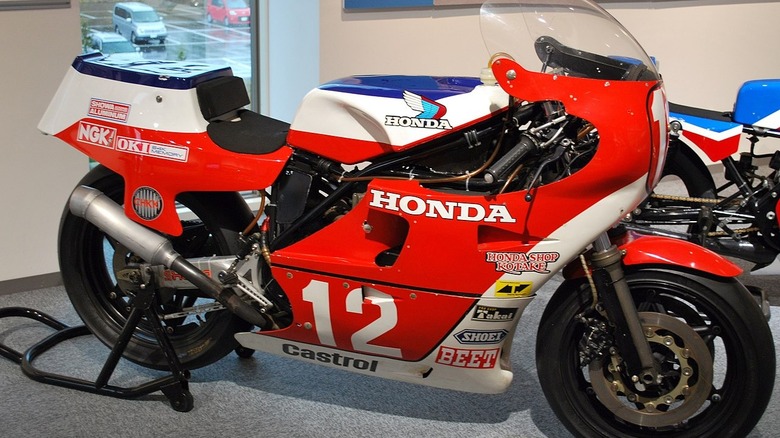NR500: Honda's Oval Engine Motorcycle
The Honda brand and racing are like bees to honey. After claiming 6th, 7th, 8th, and 11th in the 125cc lightweight class of the 1959 Isle of Man TT, Honda became the first Japanese entrant to compete in a World GP series class race. In 1963, Honda conquered the Isle of Man and took the first five places in the 125cc and 250cc categories, an impressive victory unheard of from a relative newcomer in the Grand Prix racing world. Honda moved up to the 500cc category in 1966 and took 138 class wins in the 50cc, 125cc, 250cc, and 350cc class while taking home the World GP Championship in the 500cc class.
So, what did Honda do after proving it was a technological tour de force in the GP world? It retired from professional motorcycle racing in 1967 to focus on building cars. When Honda got bit by the GP racing bug again in 1977, two-stroke racing bikes were rulers of the circuits. Since Honda motorcycles gained prominence for their four-stoke architecture, the Honda Racing Corporation (HRC) insisted on competing against two-stroke monsters with the first-ever motorcycle engine with oval pistons.
The affectionately named Honda NR500 (NR for New Racing) debuted in 1979, two years after Honda announced its intent to return to the GP 500cc class. It came with what bike enthusiasts claim is one of the bravest innovations in GP racing, the world's first motorcycle with oval piston technology.
Honda NR500: When having too much of everything proved futile
The Honda NR500 became a wake-up call for Honda and HRC. In its pursuit of outgunning the more potent and torquier two-stroke racing bikes, Honda combined multiple unproven innovations, including a 100-degree V4 engine with oval cylinders. However, the task became too burdensome for the young engineers tasked with delivering the promise of victory.
Led by Takeo Fukui, engineer Suguru Kanazawa, and chassis expert Satoru Horiike, the young guns were biting off more than they could chew as the NR500 never won a single GP race, which earned its notorious "Never Ready" alias. The focal point was the engine, a four-stroke V4 with oval-shaped pistons that typically resembled a V8 with two spark plugs, two connecting rods, and eight valves per cylinder. The initial estimates said the engine could rev to an astonishing 21,000 rpm while making 130 horsepower, enough to send shivers down the spines of its two-stroke nemesis.
Moreover, the NR500 pioneered the aluminum monocoque chassis, which was lighter than steel tubing but with a particular drawback: Servicing meant removing the engine from its cassette-like cradle, a disadvantage in the racing world. The NR500 was also notoriously tricky to push start, a requirement for GP racing back in the day.
Future Blueprint
Despite the surmounting difficulties, the brave engineers of HRC continued forging the path towards innovation. They overcame the manufacturing issues of their oval piston engine, and HRC eventually coaxed the motor to produce 20 more horsepower after its initial 110-horsepower rating. The Honda NR500 failed to qualify during its maiden attempt at the 1979 French GP, and HRC made a second version of the NR500 with an all-new tubular frame, a reconfigured cooling system, and more power.
However, the changes were not enough to make the Honda NR500 the "two-stroke killer" the company had hoped. After failing to secure a GP win, Honda retired the NR500 in 1981 and developed the NS 500 that secured Honda's first-ever 500cc GP championship in 1983.
The Honda NR500's oval pistons never gained a reputation for outlandish power. Then again, its other pioneering innovations, like a back-torque limiter (slipper clutch), quirky upside-down forks, carbon fiber brakes, and rising-rate rear suspension linkages, are now commonplace in exotic GP racing machines. The NR 500 never won a professional GP race, but it was a rolling laboratory of proprietary technology.


